In today’s modern kitchen, having the right equipment can make all the difference in creating culinary masterpieces. Two popular and versatile kitchen appliances that often grab the limelight are the food processor and the blender. These powerful machines have revolutionized the way we prepare food, simplifying tasks and saving valuable time. But the question is, who has supremacy in the kitchen? food processor vs blender.
Don’t Miss: 10 Best Calorie Counter Apps for Android!
In this blog post, we delve into the ongoing battle of food processor vs blender to highlight their differences, functionality, and the culinary tasks at which they excel. Whether you’re a seasoned chef or an aspiring home cook, understanding the strengths and weaknesses of these tools is important in making informed decisions for your kitchen.

Throughout this post, we will explore the fundamental aspects of food processors and blenders, highlighting their design, functionality, and the unique features that set them apart. By gaining a deeper understanding of their capabilities, you’ll be able to harness their full potential and improve your cooking experience.
Food Processor vs. Blender: We Can’t Ignore These Aspects
As we begin this culinary journey, we’ll examine a variety of common tasks that these tools tackle, such as chopping, pureeing, mixing, and kneading dough. By comparing their performance on these tasks, we can determine which device excels in each area. Additionally, we’ll explore their versatility, and the wide range of applications they offer, and discuss the attachments or accessories that expand their functionality.
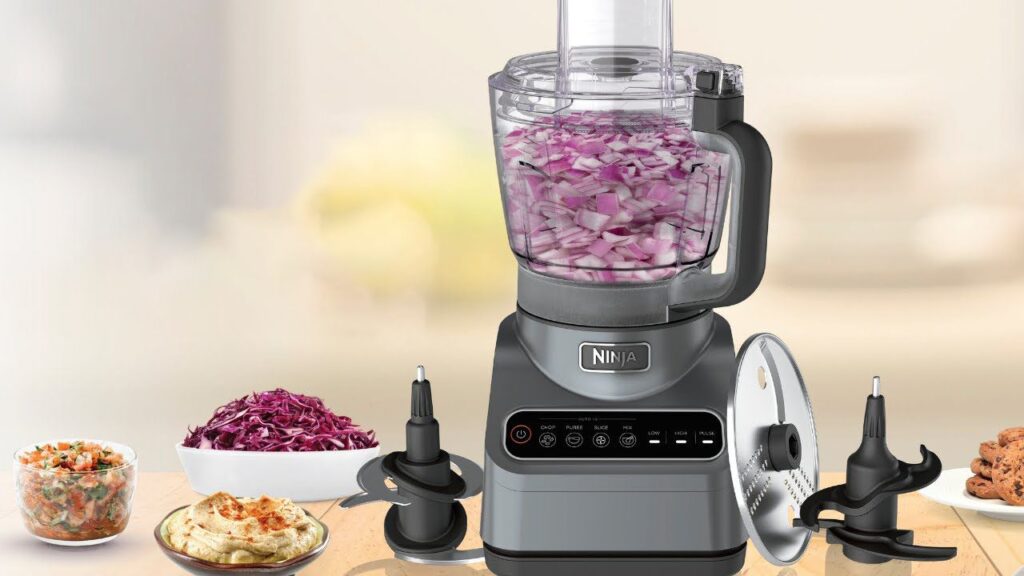
Ultimately, choosing the right appliance for your kitchen requires careful consideration of a number of factors, including your budget, available space, desired functionality, and personal cooking preferences. By presenting real-world examples and testimonials from users who have experienced firsthand the battle of food processor vs blender, we aim to provide you with valuable insight that can guide you in making the right choice.
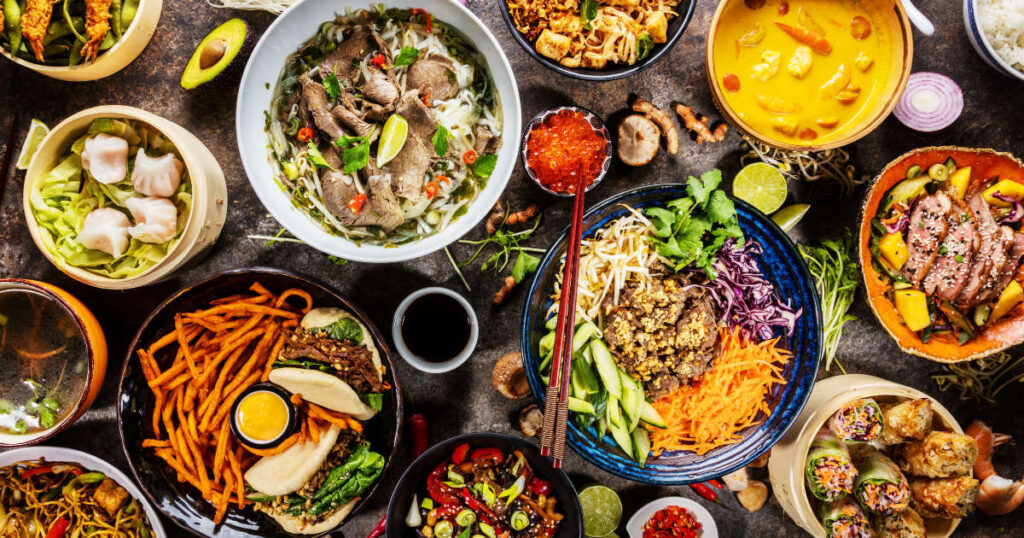
So, whether you’re looking for a machine to help you chop, blend or prepare complex recipes, join us as we settle the kitchen battle for culinary supremacy between food processors and blenders. Let’s explore the strengths, weaknesses, and real-world applications of these tools to empower you to make an informed decision and take your culinary skills to new heights.
Understanding the Basics: Food Processor vs. Blender
To truly understand the difference between food processor vs blender, it is important to understand the fundamental aspects of these devices. Let’s start by defining what a food processor and a blender are and then look at their primary functions and key differences.
What Food Processors Can Do?
A food processor is a versatile kitchen appliance designed to handle a wide variety of tasks. It typically consists of a motorized base with a bowl or container that holds a sharp blade or a set of interchangeable blades. Food processors are known for their ability to quickly and efficiently chop, shred, grate, and shred ingredients. They are capable of such tasks as mixing dough, emulsifying sauces and even making nut butter.
Also Read: Top 5 Highest Protein Foods You Must Consume!
Where Blender is Best?
Blenders, on the other hand, are specialized appliances that excel at making smooth and consistent liquid mixtures. These typically consist of a motorized base with a pitcher or jar, equipped with a blade assembly at the bottom. Blenders are perfect for making smoothies, purees, soups and sauces, which liquefy ingredients to achieve a velvety texture.

Food Processor Vs Blender: Blade Design Distinction
A major difference between a food processor and a blender lies in their blade design. Food processors often have multiple blades of varying sizes and shapes, allowing for different chopping techniques. Blenders typically have a single blade designed to create a vortex that propels ingredients toward the blade for thorough mixing.
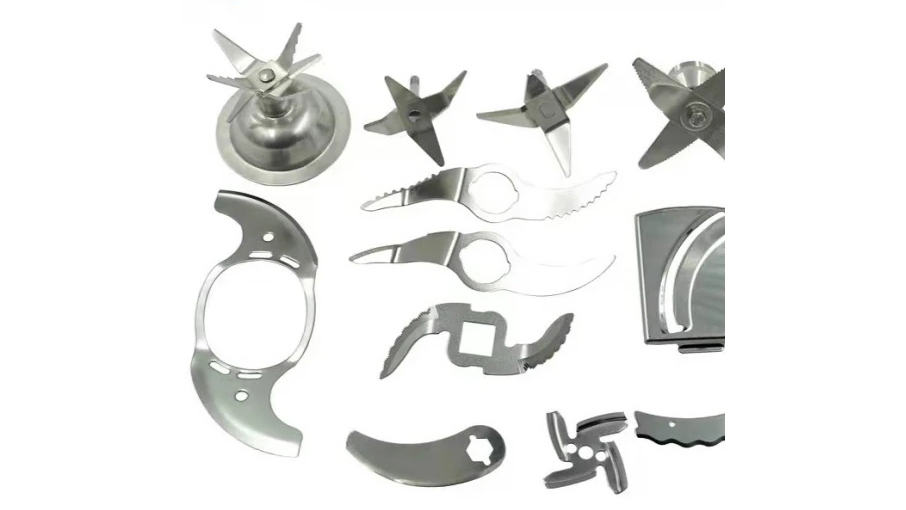
While both tools are capable of processing content, their design and functionalities set them apart. Food processors prioritize versatility and precision, offering a range of slicing and dicing options, while blenders excel at creating smooth and homogeneous blends.
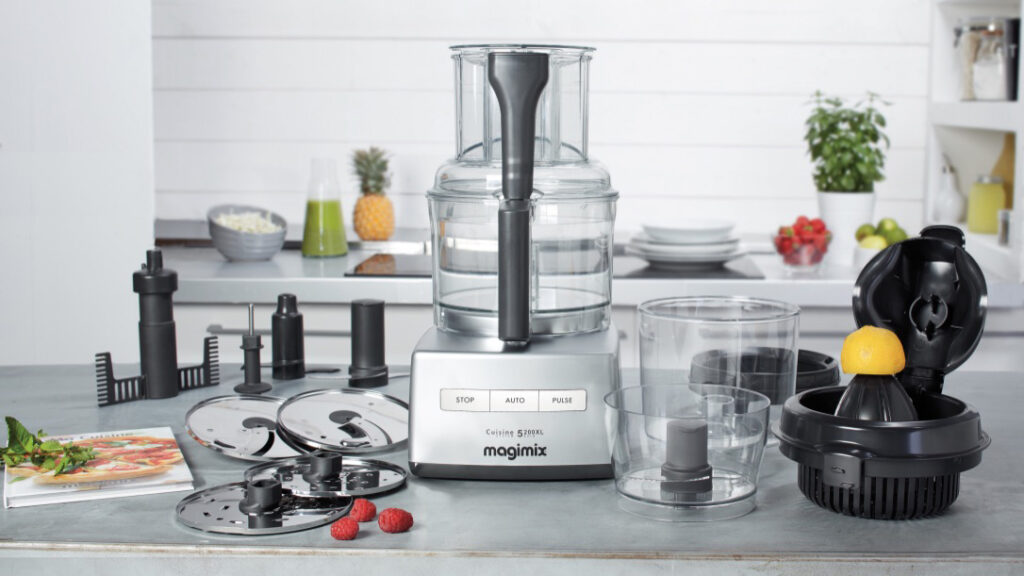
By understanding these basic differences, you can better determine which appliance is better suited for specific culinary tasks. In the next section, we’ll explore these functions in more detail, comparing the performance of food processors and blenders, and highlighting the strengths and weaknesses of each appliance.
Culinary Functions: Food Processor Vs Blender: Which Appliance Is The Best?
When it comes to specific culinary tasks, in the battle of food processor vs blender each has their own strengths and weaknesses. Let’s explore some common kitchen tasks and determine which appliance excels in each area.
A. Chopping and Slicing:
Food processors shine at tasks that involve chopping and slicing. With their sharp blades and adjustable slicing discs, food processors can quickly and evenly chop ingredients such as onions, garlic, herbs, and vegetables. They provide precise control over the size and consistency of the cuts, making them ideal for recipes that require finely chopped or diced ingredients.

On the other hand, blenders are not as effective in tasks that require precise chopping. While they can still handle softer ingredients, blenders are better suited for pureeing ingredients or blending them into a smooth mixture.
B. Blending and Pureeing:
A blender is a popular appliance for blending and pureeing tasks. Whether it is making silky smooth soups, sauces or smoothies, blenders excel at achieving a homogeneous texture. Their powerful motor and blade design creates a vortex that propels ingredients toward the blades, ensuring a thorough mix and smooth results.
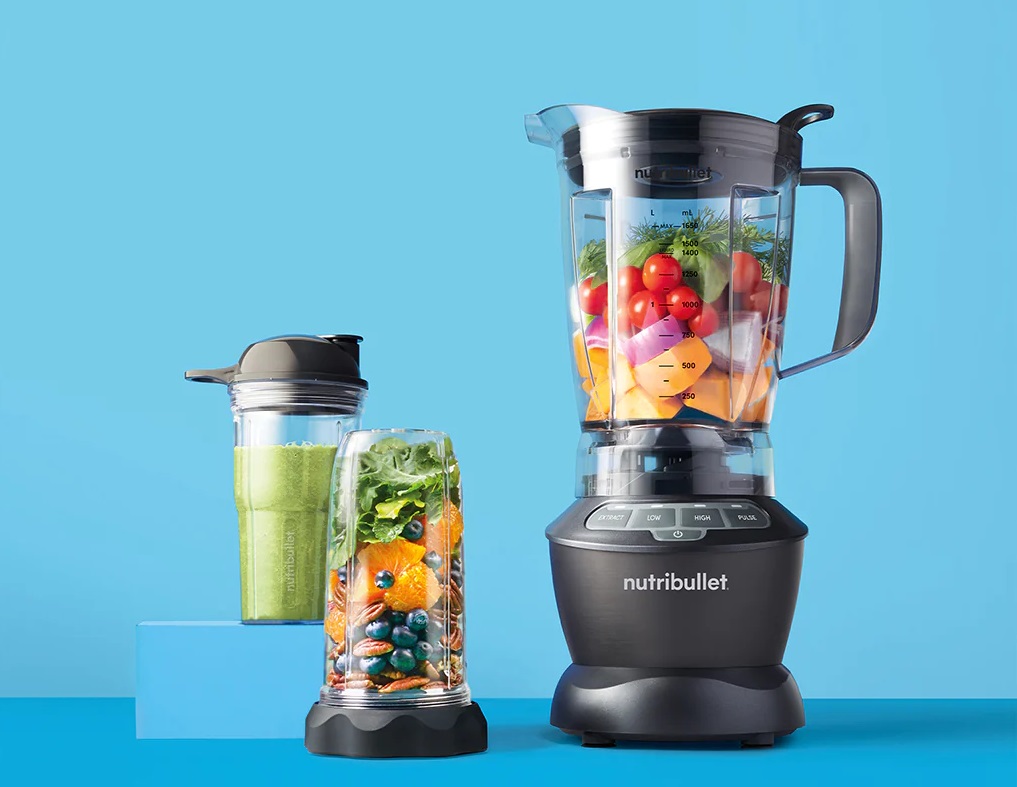
Food processors, although capable of blending and pureeing, cannot achieve the same level of smoothness as a blender. However, food processors with specialized attachments such as blending blades or high-powered motors can still handle basic blending tasks effectively. Of course in this particular case, it’s hard to say who is really winner – Food processor or blender.
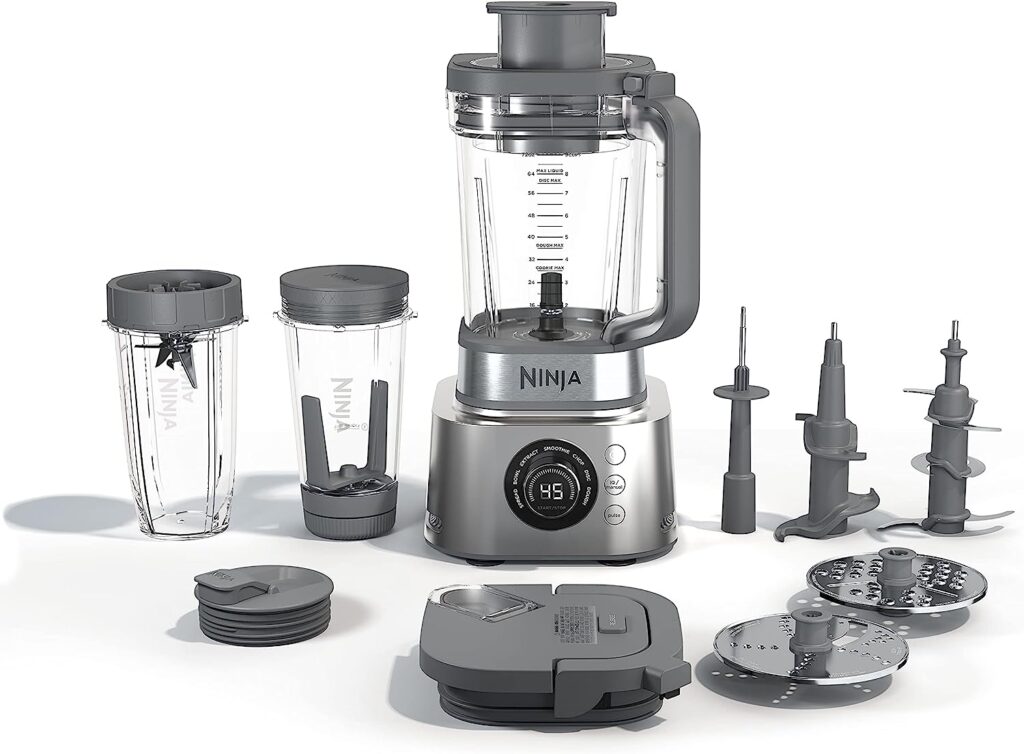
C. Wheat flour plaiting:
When it comes to kneading dough, food processors are at the forefront. With their strong motors and specialized dough blades, food processors can prepare heavy dough with ease. From bread flour to pastry flour, they can save you time and effort by providing consistent and well-kneaded results.

Blenders, on the other hand, are not designed for kneading dough. Their blade assembly and jar design are more suitable for liquid-based ingredients, making them less effective and potentially harmful if used for kneading tasks. So in this battle: food processor vs blender we think food processors are the winner.
D. Shredding and Grating:
Food processors are excellent for chopping and grating tasks. Equipped with shredding and grating discs, food processors can easily process ingredients like cheese, vegetables, and even nuts. They give consistent results and save a lot of time compared to manual shredding or grating methods.
While blenders may have settings for coarse or fine blending, they are not optimized for chopping or grating tasks. Their blade design and blending speed are better suited for creating smooth textures rather than achieving finely cut or abraded results. Of course if you’re too much in this particular curriculum we prefer the food processor.
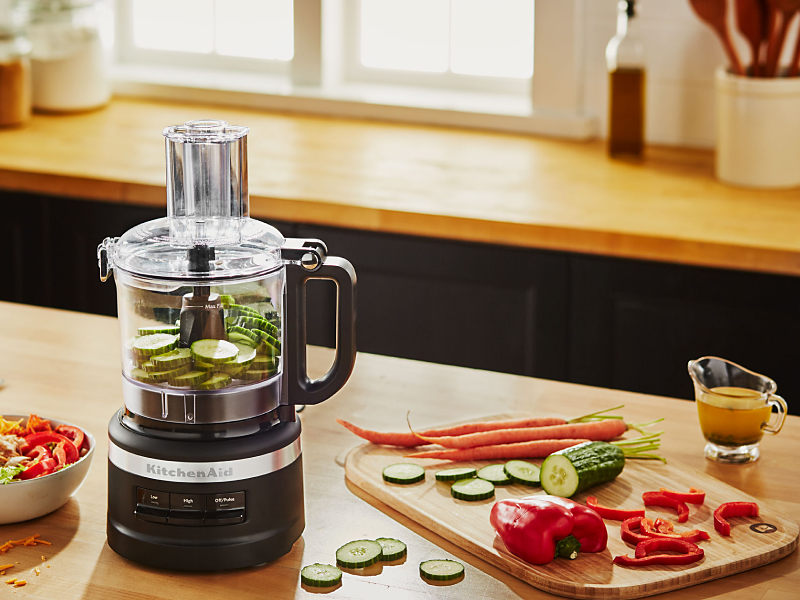
By understanding the strengths of each appliance in different culinary tasks, you can make an informed decision based on the specific needs of your kitchen. In the next section, we’ll explore the versatility of food processors and blenders, highlighting the wide range of applications they offer and the attachments that expand their functionality.
Definitely! Here is a description of the fourth point, “Versatility: exploring the range of applications”:
Versatility: exploring the range of applications of Food Processor & Blenders
One of the key factors to consider when comparing food processors and blenders is their versatility in handling a wide range of culinary applications. Let’s look into the versatility of these tools and explore the various attachments and accessories that enhance their functionality.
Food Processors: Use Scenarios with Different Blades
Food processors are renowned for their versatility in the kitchen. They can do many tasks beyond chopping and chopping thanks to their interchangeable blades and attachments. Some common attachments and accessories for food processors include:
- Dough Blades: These special blades are designed for kneading dough, making food processors a convenient option for baking enthusiasts.
- Shredding and Grating Discs: Using shredding and grating discs, food processors can quickly process ingredients such as cheese, vegetables, or even chocolate, saving time and effort.
- Slicing Disc: Food processors often come with adjustable slicing discs that allow you to get precise and consistent slices of fruits, vegetables, and more.
- Emulsifying Attachment: With the help of the emulsifying attachment, food processors can create smooth sauces, dressings, and emulsions with ease.
Blenders: Different Settings & Options
Although blenders may not offer the same versatility as food processors, they still have their own range of applications and accessories. Some common features and accessories found in blenders include:
- Speed and pulse settings: Blenders often come with multiple speed settings and a pulse function, so you can control the texture and consistency of your blends.
- Ice-Crushing Blades: Many blenders come equipped with ice-crushing blades, making them perfect for making fresh-frozen drinks and smoothies.
- Individual Blending Cups: Some blenders come with individual-sized blending cups, ideal for making single-serve smoothies or individual dishes.
- SPECIAL BLENDING PROGRAMS: Advanced blenders can have pre-programmed settings for specific functions like smoothies, soups, or even nut butters, providing convenience and consistent results.
The versatility of the food processor and blender opens up a world of possibilities in the kitchen. Whether you’re preparing complex dishes, experimenting with different textures, or exploring different cooking techniques, these appliances offer a range of options to suit your needs.
In the next section, we’ll discuss the factors to consider when deciding between a food processor and a blender, to help you make an informed choice that suits your budget, available kitchen space, desired functionalities, and personal cooking preferences.
Factors to Consider: Food Processor vs blender: Making the Right Choice
When it comes to choosing between a food processor and a blender, there are many factors to consider. By evaluating these factors, you can make an informed decision that is tailored to your specific needs and preferences. Let’s explore the key factors:
Budget
Start by determining your budget for the equipment. Food processors and blenders come in a wide range of prices, so it is essential to establish how much you are willing to invest. Consider the features, functionality, and durability you value most within your budget range.

Available kitchen space
Evaluate the amount of counter or storage space you have in your kitchen. Food processors and blenders differ in size, with food processors generally being larger due to their additional attachments. Make sure you have enough space to keep the equipment without compromising your workspace.

Desired Functionalities
Consider the specific functions and functionalities you require from the device. If you need to cut, slice, shred or knead dough frequently, a food processor may be a better choice. On the other hand, if your primary focus is to blend, puree, and create a smooth texture, a blender would be a more suitable choice.
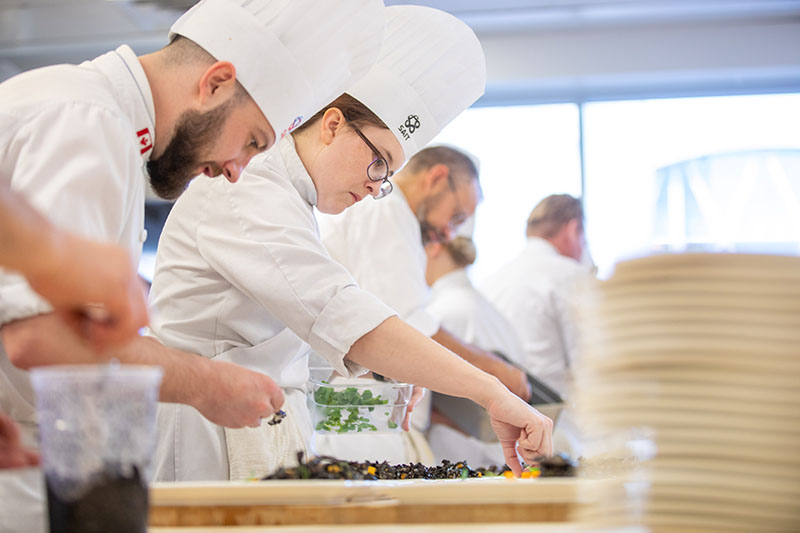
Cooking preferences
Consider your cooking style and the types of dishes you typically prepare. Are you more inclined toward baking and flour-based preparations, or do you prefer mixing and liquid-based recipes? Understanding your cooking preferences can help guide you toward the appliance that best matches up with your culinary needs.

Maintenance and Cleaning
Consider the ease of maintenance and cleaning of both devices. Look for models that have dishwasher-safe parts or removable components that are easy to clean. Ease of maintenance can greatly affect your overall experience with the appliance.
User Reviews and Recommendations
Take the time to research and read user reviews and recommendations for specific food processors and blenders. Learning from the experiences of other people using devices can provide valuable insight and help you make more informed decisions.
By carefully evaluating these factors, you can narrow down your options and choose the device that best suits your needs, lifestyle, and budget. Keep in mind that both food processors and blenders have their own unique advantages and excel at different culinary tasks. Consider your preferences and priorities to find the perfect match for your kitchen.
In the next section, we’ll provide real-world examples and testimonials, including those from individuals who have experienced first-hand the battle between a food processor and a blender. Their experience and insight will provide a balanced perspective to aid your decision-making process.
Real-world examples and testimonials
To provide an all-around perspective on the battle between food processors and blenders, let’s explore real-world examples and testimonials from those who have practical experience with these appliances. Their insight and experience can provide valuable insight to help you make an informed decision.
Home Cook Testimonials
We’ll be featuring testimonials from home cooks who have used both a food processor and a blender in their culinary adventures. They’ll share their experiences, preferences, and the reasons behind their equipment choices. These testimonials will highlight specific tasks and recipes where the food processor or blender proved to be the ideal tool.

Professional Chef Experience
We’ll also include insights from professional chefs who rely on these tools in their commercial kitchens. Their expertise and knowledge will provide a unique perspective on the capabilities of food processors and blenders in a professional setting. They’ll share the culinary tasks assigned to each appliance and explain the reasoning behind their choices.
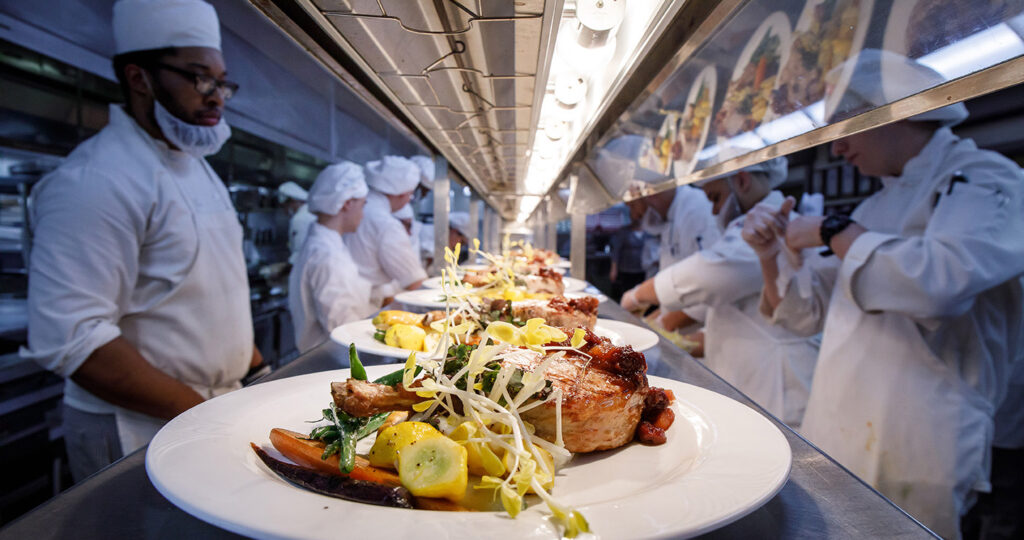
Real-Life Scenarios
We will present real-life scenarios where challenges individuals faced or successes while using food processors and blenders. These examples will demonstrate the versatility and limitations of each tool, highlighting how they perform in a variety of cooking situations.
By exploring these real-world examples and testimonials, you’ll gain a deeper understanding of the practical applications of food processors and blenders. Their experiences will serve as a valuable guide in helping you make an informed decision based on your cooking needs and aspirations.
Conclusion: Food Processor Vs Blender: What Should You Buy?
After sorting out the kitchen battle between food processor vs blender, it’s clear that both appliances have their own unique strengths and excel at a variety of culinary tasks. Understanding the basics, comparing their performance in various tasks, exploring their versatility, considering important factors, and examining real-world examples and testimonials will prove valuable to guide you in choosing the right one for your kitchen. provided insight.
Food processors are versatile workhorses, ideal for tasks such as chopping, slicing, shredding, and kneading dough. They offer precise control, produce consistent results, and make them a favorite among home cooks and professional chefs alike.
Blenders, on the other hand, are specialized in blending and creating smooth textures. They excel at tasks like pureeing, making silky smooth soups and sauces, and making refreshing smoothies. Their ability to quickly and efficiently achieve a homogeneous mix makes them a popular choice for those who prefer liquid-based recipes.
When making your decision, consider factors such as your budget, available kitchen space, desired functionality, cooking preferences, and maintenance requirements. Consider the tasks you often do in the kitchen and the types of dishes you enjoy preparing. By combining your needs and preferences with the features of each device, you can find the perfect match.
Ultimately, the choice between a food processor and a blender depends on your specific needs and culinary aspirations. Some individuals may find that owning both appliances meets their cooking style, while others may prefer to invest in one appliance that best meets their primary needs.
Remember to research and read user reviews, ask for recommendations, and try out devices if possible before making your final decision. By taking into account the experiences and insights of others, you can gain a better understanding of how food processors and blenders perform in real-life situations.
In the end, there may be no clear winner in the battle for culinary supremacy between food processors and blenders. It is your own needs, preferences, and cooking style that will determine which appliance will reign supreme in your kitchen. So, choose wisely, embrace the capabilities of your chosen appliance, and let it unleash your culinary creativity and expertise.
Happy Cooking!
